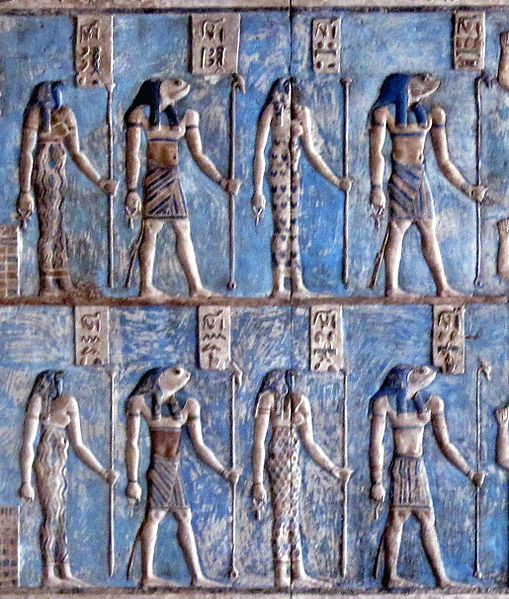Noah’s Flood in Egyptian Hieroglyphs ?
Many scholars contend that Genesis borrowed the stories of creation and the Flood from Babylonian manuscripts, particularly the Enuma elish. They suggest that biblical writers during or after the Babylonian Exile invented the early parts of Genesis by copying ancient Babylonian myths. But were the Babylonians really the first ones to perpetrate an account of the Flood? Or does a memory of Noah’s flood appear earlier, in Egyptian Hieroglyphs?
Some Egyptologists have pointed out the biblical account of primeval history is more similar to that of Egypt than that of Babylon. This should not be surprising since either Ham (Noah’s son) or Mizraim (his grandson) founded Egypt. Much later, the Israelites spent 400 years there. In fact, it appears that Genesis 1–2 may have been written by someone who understood Egyptian primeval history and purposely corrected mistakes in the Egyptian’s version. Moses, who was raised in the Egyptian court, seems to be the ideal candidate.
In 2013 article, Gavin Cox studies the connections between Egypt’s primeval history and that of Genesis. He also examines Egypt’s understanding of the Flood and the relationship between the Hamitic Cosmology and the Shemitic Cosmology.
There are three main creation stories that emerged in Egypt from Heliopolis, Memphis, and Hermopolis. Some similarities between these stories are that they all feature a primordial ocean, a primeval hill, and a deification of nature.
The story from Heliopolis features a group of nine gods. It speaks of Atum, the creator god, who emerged from the primordial waters and created two other gods, Shi and Tefnut, by sneezing and spitting them out. The other gods were the descendants of Shi and Tefnut. This may be reminiscent of God creating Adam and Eve, who then populated the earth.
According to the story from Memphis, Ptah created by conceiving in his mind what should be created and speaking it into being. This seems strikingly similar to the biblical account of God speaking creation into existence. The story from Hermopolis features a group of eight gods, known collectively as the Ogdoad, who were born in the primeval waters. They represented chaos from which a creator-god brought order.
In Genesis 1:1, the word for “beginning” literally means head. In Egyptian hieroglyphs, the symbol used to describe the beginning of time is that of a man’s head.
Just as God created the universe by speaking it into being, Egyptian mythology contends that life was created according to the word of a god. One inscription records that Atum created animal life by commanding it to be, and another describes Ptah thinking and so creating. This stands in contrast to Babylonian myths in which creation by word does not appear.
Genesis 1:6–8 describes God separating waters from waters with the firmament between. This is similar to the Egyptian inscription which describes the heavens being separated from the primeval waters and from the earth.
#archaeohistories






